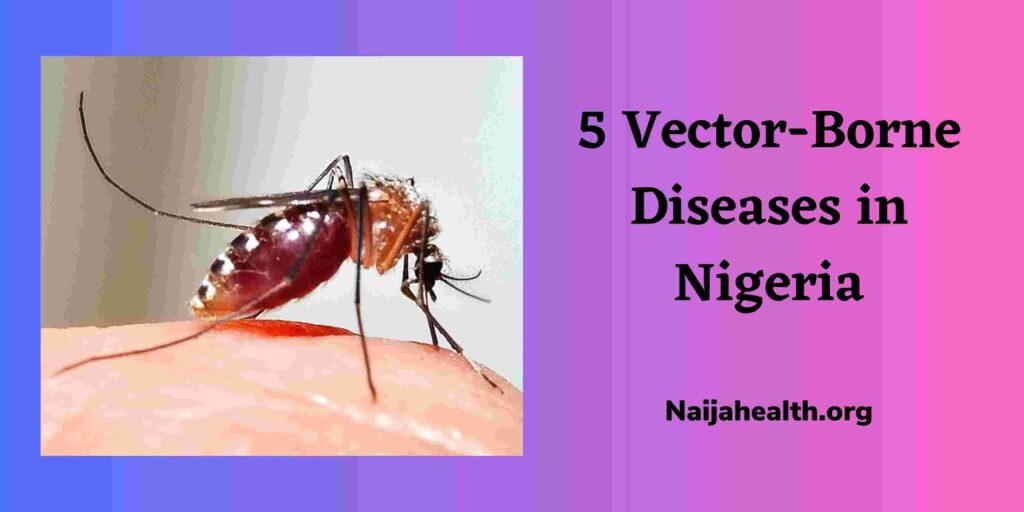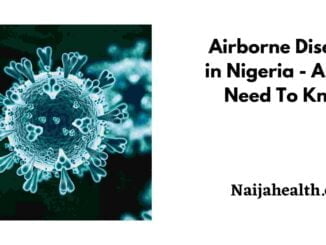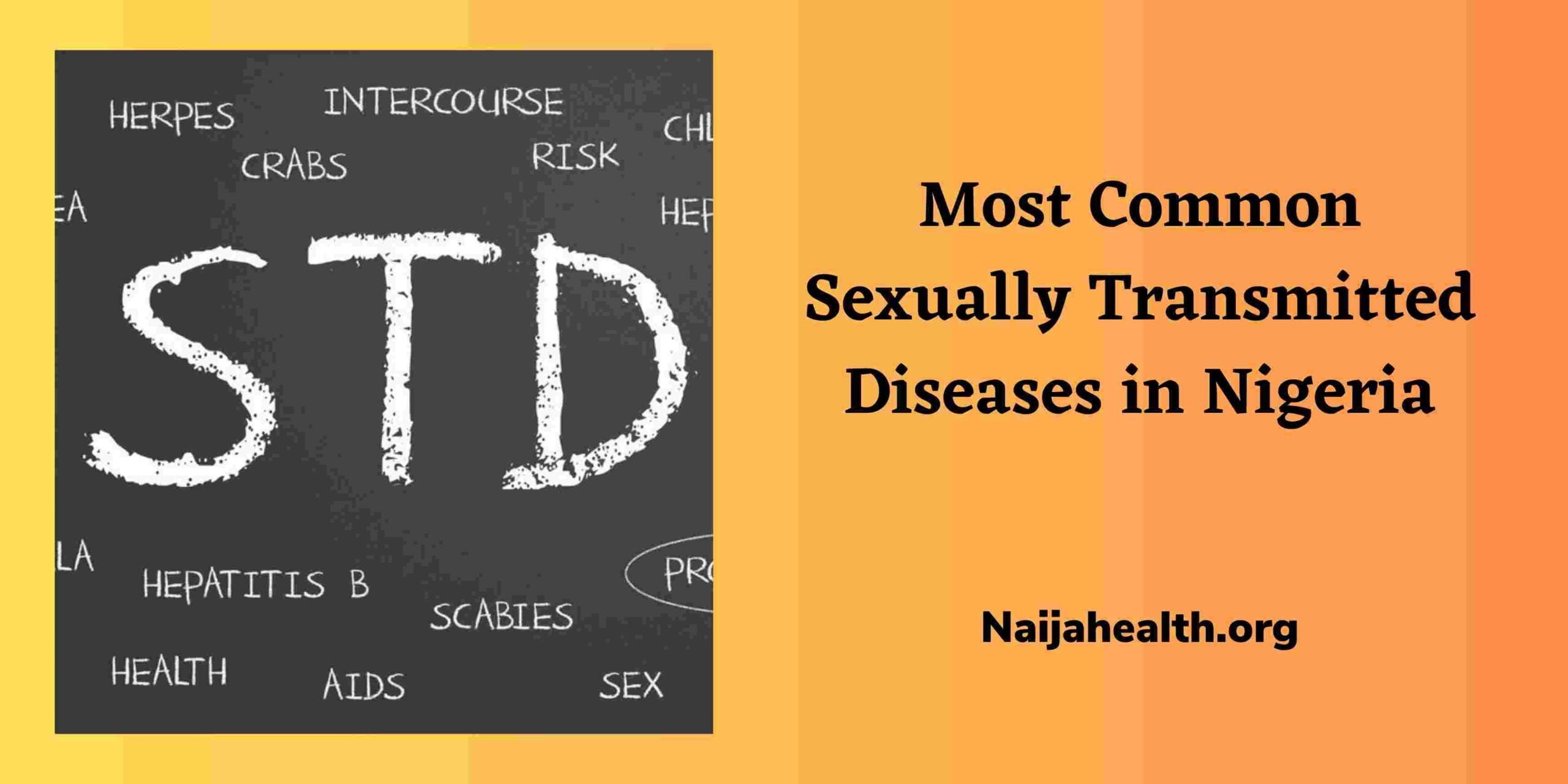
5 Vector-Borne Diseases in Nigeria
Vector-borne diseases pose a significant health challenge in Nigeria, impacting the population’s well-being and economic development. In this article, we will explore five major vector-borne diseases in Nigeria: Malaria, Dengue Fever, Yellow Fever, Lassa Fever, and African fascioliasis.
By delving into each disease’s prevalence, transmission, symptoms, diagnosis, treatment, and prevention strategies, we aim to provide a comprehensive understanding of the vector-borne disease landscape in Nigeria.
Malaria in Nigeria
Malaria remains a major public health problem in Nigeria, posing a significant burden of morbidity and mortality. It disproportionately affects vulnerable populations such as young children and pregnant women.
According to the World Health Organization (WHO), Nigeria accounted for about 25% of malaria cases globally in 2019.
Malaria is transmitted mainly through the bite of an infected female Anopheles mosquito, which is active at night.
The main vector species of malaria in Nigeria are Anopheles gambiae and Anopheles funestus. These mosquitoes breed in standing water such as ponds, puddles and open water reservoirs.
Symptoms, Diagnosis and treatment
Malaria usually presents with symptoms such as high fever, headache, body aches and fatigue. Other symptoms may include chills, sweating, nausea, and vomiting.
Quick, accurate diagnosis is decisive for effective treatment and prevention of complications.
Diagnostic methods include microscopy, rapid diagnostic tests (RDTs) and molecular techniques. Treatment of uncomplicated malaria in Nigeria follows national guidelines, with artemisinin-based combination therapy (ACT) as first-line treatment.
Prevention and Control Strategies
Malaria control efforts in Nigeria focus on a multifaceted approach, including vector control and preventive measures.
- Insecticidal nets (ITNs) are widely distributed and promoted to protect the body from mosquito bites while sleeping.
- Indoor residual spraying (IRS) is the application of insecticides to the walls and interior surfaces of a home to kill mosquitoes that reside there.
- Environmental management aims to eliminate mosquito breeding grounds by improving drainage and reducing standing water. – Intermittent prophylaxis of pregnant women (IPTp) with antimalarial drugs is recommended to protect them and their fetuses.
- Integrated Community Case Management (iCCM) programs have been implemented to provide rapid diagnosis and treatment at the community level.
- Health education campaigns raise awareness about malaria prevention, early recognition of symptoms and the importance of seeking medical attention early.
Dengue Fever in Nigeria
- Dengue fever has become a growing public health problem in Nigeria in recent years.
- The disease is endemic in some urban areas with high mosquito density and favorable climatic conditions.
- Urbanization, increased tourism and climate change contribute to the spread of dengue in Nigeria.
- This mosquito breed in standing water sources, including discarded items, tires, water containers. – Mosquitoes usually bite during the day, peaking in the early morning and evening.
- Dengue fever has symptoms such as high fever, severe headache, joint and muscle pain, and skin rash.
- In severe cases, dengue can progress to dengue fever (DHF) or dengue shock syndrome (DSS), which can be life-threatening.
- Diagnosis is based on clinical symptoms, medical history, and laboratory tests, including polymerase chain reaction (PCR) and serological testing.
- Dengue treatment focuses on supportive care, including rest, rehydration, and fever control. Severe cases may require hospitalization and specialist medical intervention.
- Vector control is very important to prevent the spread of dengue. Efforts include eliminating spawning sites by removing standing water tanks and implementing appropriate waste management practices.
- Nets, and protective clothing that have been treated with insecticides can reduce contact between mosquitoes and people.
- Public health campaigns play an important role in raising awareness about dengue prevention, recognizing symptoms and seeking medical care. – Integrated vector management methods, such as larvicide, misting and source reduction, are deployed to control mosquito populations in high-risk areas.
Challenges and Efforts
Dengue control in Nigeria faces a number of challenges including limited resources, inadequate surveillance systems and limited public awareness.
The presence of certain types of dengue virus increases the risk of a severe dengue epidemic.
- Urbanization, population mobility and climate change contribute to the expansion of dengue transmission areas.
- Continuous efforts include strengthening surveillance systems, improving vector control measures, and improving health infrastructure and capacity. – Research and collaborate with international partners to develop effective vaccines and innovative control strategies against dengue.
Yellow Fever in Nigeria
Nigeria has experienced periodic outbreaks of yellow fever, posing a major public health challenge.
- Outbreaks often occur in areas with low vaccination rates and where the virus is transmitted by infected mosquitoes.
- The virus circulates in a sylvatic (jungle) cycle associated with non-human primates as hosts, with mosquitoes transmitting the virus between primates and humans.
- Yellow fever can cause a wide range of symptoms, from mild to severe. Mild cases often include fever, headache, muscle aches, and jaundice (yellowing of the skin and eyes).
- Severe cases can progress to fulminant form leading to organ failure, bleeding and death.
- Supportive care is the main management approach, paying attention to fluid balance, fever control, and treatment of complications.
- Vaccination is the most effective way to prevent yellow fever. – Yellow fever vaccine is safe and provides long-term protection.
National vaccination campaign to increase vaccination coverage, especially in high-risk areas and during epidemic.
- Yellow fever surveillance systems help track outbreaks, detect cases, and guide response efforts.
- Integrated vector management strategies focus on reducing mosquito populations and preventing transmission. This includes larval control through environmental management, the use of insecticides and the elimination of mosquito breeding grounds.
– Public health education and awareness campaigns emphasizing personal protection measures, such as wearing protective clothing and using mosquito repellent.
Challenges and Efforts
- Challenges in the fight against yellow fever in Nigeria include limited access to vaccines, weak health systems, and difficulties in reaching remote and vulnerable populations.
- Vector control is complex due to the large number of species of Aedes mosquitoes and requires long-term efforts.
- Cooperate with international partners, build capacity and strengthen the network of laboratories supporting yellow fever surveillance, diagnosis and response. – Nigeria’s commitment to the Yellow Fever Outbreak Elimination (EYE) Strategy led by the World Health Organization (WHO) and partners to control and eliminate yellow fever outbreaks in Nigeria by 2026 is here
Lassa Fever in Nigeria
- Lassa fever is a viral disease circulating in Nigeria, with sporadic outbreaks occurring year-round.
- The disease is more common in the southern regions of the country, known as the Lassa fever belt.
- Lassa fever is caused by the Lassa virus, which is transmitted primarily to humans through contact with infected Mastomys rodents.
- These rodents excrete the virus through their urine and feces, contaminating the environment and leading to human exposure.
- Secondary human-to-human transmission can occur through direct contact with the blood or body fluids of an infected person.
- Lassa fever can range from mild to severe, with symptoms including fever, headache, malaise, sore throat, and muscle aches.
- In severe cases, the disease can progress to dengue fever with manifestations such as bleeding, organ failure and shock.
- Diagnosis is difficult because initial symptoms are nonspecific, but laboratory tests for specific antibodies to Lassa virus or viral RNA can confirm infection.
- The prevention of Lassa fever mainly involves measures aimed at reducing human contact with infected rodents and their droppings.
This includes good hygiene practices, such as proper food storage, waste management, and avoiding contact with rodents.
- Medical staff should follow infection prevention and control measures when taking care of suspected or confirmed cases.
- Community education and community participation play an important role in raising awareness, promoting preventive behaviors and early notification of suspected cases.
Ongoing Challenges and Efforts
- Delayed diagnosis, inadequate healthcare infrastructure, and potential for hospital transmission are significant challenges.
- Continuous efforts involve building laboratory capacity for rapid diagnostics, training medical staff, and improving surveillance systems.
- Research and collaborate with international partners focused on vaccine development, improving diagnostics, and understanding the ecology and transmission of the virus
African Fascioliasis (Sleeping Disease)
- African liver fluke disease, also known as sleeping sickness, is a parasitic disease caused by the protozoan parasites Trypanosoma brucei gambiense and Trypanosoma brucei rhodesiense.
- It circulates in sub-Saharan Africa, affecting 36 countries.
- Trypanosoma brucei gambiense causes disease in chronic form, while Trypanosoma brucei rhodesiense causes disease in acute form.
- The parasite is transmitted to humans through the bite of an infected tsetse fly (species Glossina).
- The tsetse fly is found in rural and wooded areas, especially near rivers and lakes, and is most active during the day. Parasites multiply in the fly’s intestines and salivary glands, allowing disease transmission when the fly feeds on a human or animal host.
- The treatment depends on the parasite species and the stage of the disease.
- Drugs such as pentamidine, suramin, melarsoprol, eflornithine and nifurtimox are used but the method of administration and duration of treatment depends on the specific disease form and stage of the disease.
- Strategies include the use of insecticide-treated targets and traps to control tsetse fly populations, insecticide-treated clothing and repellents to protect individuals from fly bites.
- Health education programs play an essential role in raising awareness about the disease, its transmission and the importance of seeking prompt medical attention.
Ongoing Challenges and Efforts
- African fascioliasis poses significant challenges due to its complex life cycle, limited access to health care in affected areas, and the need for diagnostic and treatment facilities.
- Disease control efforts include establishing national control programmes, capacity building and research to improve diagnostics, drugs and vector control.
- Collaboration between affected countries, international organizations and research institutes is essential to develop effective strategies for controlling and ultimately eliminating sleeping sickness.
FAQs
What is vector-borne disease?
A vector-borne disease is an infection caused by pathogens such as bacteria, viruses, or parasites that are transmitted to humans or animals through the bite of an infected arthropod, mainly mosquitoes, ticks, fleas, and ticks. fly insects.
What are the common symptoms of vector-borne diseases?
Symptoms of vector-borne disease can vary depending on the specific disease and the pathogen involved. However, common symptoms include fever, headache, fatigue, muscle aches, rash, joint pain and, in some cases, more serious manifestations such as bleeding or organ failure.
How are vector-borne diseases diagnosed?
Diagnosis of vector-borne diseases usually involves a combination of clinical evaluation, laboratory testing, and sometimes imaging studies.
Specific diagnostic methods may include blood tests, serologic tests to detect antibodies, polymerase chain reaction (PCR) tests to identify the genetic material of pathogens, and examination of tissues. or fluid of the affected area.
How to prevent vector-borne diseases?
Strategies to prevent vector-borne disease focus on both individual protection and vector control. Personal protection includes wearing protective clothing, using insect repellent, and sleeping under mosquito nets.
Vector control measures include reducing vector populations by eliminating breeding grounds, using insecticides, and implementing community-based interventions.
Are there vaccines against vector-borne diseases?
Vaccines are available to prevent some vector-borne diseases. For example, there are vaccines for diseases such as yellow fever and Japanese encephalitis. However, not all vector-borne diseases have vaccines, and the availability and effectiveness of vaccines vary depending on the specific disease.
Which areas are most affected by vector-borne diseases?
Vector-borne diseases are found worldwide, but are especially common in tropical and subtropical regions where the vector thrives. Countries in Africa, Southeast Asia and the Americas bear a high burden of vector-borne diseases due to factors such as favorable climates, inadequate vector control measures, and access to care. limited health care.
Are vector-borne diseases treatable?
Many vector-borne diseases can be treated, but the specific treatment depends on the disease and the causative agent. Treatment may include the use of antiparasitic drugs, antiviral drugs, or antibiotics. Early diagnosis and prompt initiation of appropriate treatment are key to improved outcomes.
Conclusion
Vector-borne diseases pose a significant threat to public health globally, including in Nigeria. Malaria, dengue, yellow fever, Lassa fever and African fascioliasis (sleeping sickness) are among the major vector-borne diseases in Nigeria.
These diseases are caused by different pathogens and are transmitted by different vectors, including mosquitoes, ticks, and flies.The burden of vector-borne diseases in Nigeria is influenced by factors such as climate, environmental conditions, population fluctuations, and health infrastructure.
These diseases often affect vulnerable populations in rural and urban areas, where access to prevention and health care may be limited.


Be the first to comment